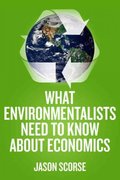Question
PLEASE DRAW NECESSARY DIAGRAM AS PER THE BELOW ANSWER WRITTEN. NO NEED ANSWER, ONLY NEED TO DRAW NECESSARY DIAGRAM PLEASE. Questions is based on an
PLEASE DRAW NECESSARY DIAGRAM AS PER THE BELOW ANSWER WRITTEN. NO NEED ANSWER, ONLY NEED TO DRAW NECESSARY DIAGRAM PLEASE.
Questions is based on an article published in the AFR titled "Australia must have a new macroeconomic framework". Please read the article and answer questions (using appropriate diagrams with reference to relevant evidence):
In the recovery phase of COVID19 of Australia, author argues that we need a coherent approach with
fiscal, monetary and climate change polices to achieve the best possible macroeconomic outcomes
for our country. Explain why we need a coherent approach in our recovery phase of COVID19 by using
AD-AS model (starting from below the full-employment level).
Answer: To obtain the best macroeconomic outcomes for Australia during COVID19 recovery, the author suggests a cohesive fiscal, monetary, and climate change policy. The AD-AS model shows why COVID19 recovery requires a coordinated approach. This model explains how aggregate demand (AD) and aggregate supply (AS) affect economic production and pricing.
- The AD-AS model (see figure 1) indicates that when the economy is below full employment, the AD curve is below the AS curve and output is below full employment. Fiscal and monetary measures can boost aggregate demand and return the economy to full employment. Government spending and taxation affect aggregate demand through fiscal policy. Government spending or tax cuts can boost aggregate demand. Yet, monetary policy affects aggregate demand through interest rates and money supply. To boost consumption, cut interest rates or expand the money supply.
- Climate change policy can boost aggregate demand alongside fiscal and monetary policy. Climate change policies reduce greenhouse gas emissions and promote renewable energy. This can be done by encouraging businesses and people to invest in renewable energy or by taxing carbon-based energy sources.
- Figure 2 shows how all three approaches can be used together to raise the AD curve. This will boost aggregate demand and restore full employment. The AS curve and AD curve will intersect at full employment, maximizing the economy's production.
- In conclusion, to maximize macroeconomic outcomes during the COVID19 pandemic recovery, fiscal, monetary, and climate change policies must be coordinated. The AD-AS model shows that these policies can improve aggregate demand and return the economy to full employment when employed jointly.
Explanation:
- To ensure that our nation has the healthiest possible macroeconomic climate throughout the recovery phase of the COVID19 pandemic, it is vital to have a cohesive approach with fiscal, monetary, and climate change policies. This will allow us to achieve the greatest possible outcomes for our economy. The AD-AS model is a useful tool for demonstrating why this is the case. The amount of output and the price level in the economy are both determined by the interaction depicted in the model, which depicts how aggregate demand (AD) and aggregate supply (AS) interact with one another. When the economy is performing below the level of full employment, both the AD curve and the AS curve will be located below the level of full employment, and output will be below the level of full employment.
- The use of fiscal policy can raise aggregate demand and help the economy move closer to full employment, both of which are desirable outcomes. In order to accomplish this goal and promote aggregate demand, the government can either increase its expenditure or reduce its tax burden. On the other side, monetary policy is the process of influencing aggregate demand through the use of interest rates and the amount of money that is available. Either by reducing interest rates, which will stimulate borrowing and spending, or by increasing the money supply, which will also increase expenditure, this can be accomplished.
- Increases in aggregate demand can also be achieved through the application of climate change policy, in addition to fiscal and monetary policy. Policies designed to address climate change include initiatives to cut emissions of greenhouse gases and promote the use of alternative, renewable sources of power. This can be accomplished by the implementation of carbon taxes to discourage the use of energy sources that are based on carbon, as well as through the provision of financial incentives to commercial enterprises and private families for the purchase of renewable energy sources.
- As can be seen in figure 2, when all three policies are implemented in concert with one another and with a level of coherence, they have the potential to shift the AD curve higher and to the right. This will result in an increase in aggregate demand and will bring the economy closer to the level of full employment. When we reach this point, the AS curve and the AD curve will meet at the level that corresponds to full employment, and the economy will have reached its maximum potential production.
- In order to achieve the best potential macroeconomic results during the recovery phase of the COVID19 pandemic, it is therefore vital to use fiscal, monetary, and climate change policies in a cohesive manner. The fiscal and monetary policies can help to enhance aggregate demand, while the climate change policies can help to reduce emissions of greenhouse gases and stimulate the use of renewable energy sources. Together, these policies have the potential to help increase aggregate demand. Combined, these policies have the ability to help the economy move the AD curve up and to the right, which in turn will assist the economy in realizing its full output potential.
Step by Step Solution
There are 3 Steps involved in it
Step: 1

Get Instant Access to Expert-Tailored Solutions
See step-by-step solutions with expert insights and AI powered tools for academic success
Step: 2

Step: 3

Ace Your Homework with AI
Get the answers you need in no time with our AI-driven, step-by-step assistance
Get Started


